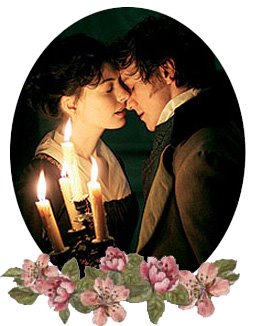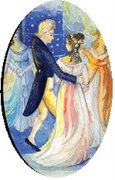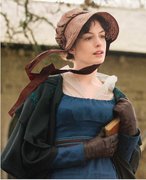 Let's get serious for a minute this week and talk about LOVE and MARRIAGE. In Mansfield Park, Chapter 35 we find a discussion between Edmund and Fanny concerning Fanny's recent rejection of Henry Crawford's proposal of marriage. Edmund had just returned home and heard the news of the proposal. He wished to discuss her feelings about the matter so he joined her in a walk through the shrubbery.
Let's get serious for a minute this week and talk about LOVE and MARRIAGE. In Mansfield Park, Chapter 35 we find a discussion between Edmund and Fanny concerning Fanny's recent rejection of Henry Crawford's proposal of marriage. Edmund had just returned home and heard the news of the proposal. He wished to discuss her feelings about the matter so he joined her in a walk through the shrubbery.
Fanny, at one agitated and dejected, replied, "IF you hear of it from everybody, cousin, there can be nothing for me to tell."
Not of facts, perhaps; but of feelings, Fanny. No one but you can tell me them. I do not mean to press you, however. If it is not what you wish yourself, I have done. I had thought it might be a relief."
"I am afraid we think too differently for me to find any relief in talking of what I feel."
"Do you suppose that we think differently? I have no idea of it. I dare say that, on a comparison of our opinions, they would be found as much alike as they have been used to be: to the point - I consider Crawford's proposals as most advantageous and desirable, if you could return his affection. I consider it as most natural that all your family should wish you could return it; but that, as you cannot, you have done exactly as you ought in refusing him. Can there be any disagreement between us here?"
"Oh no! But I though you blamed me. I thought you were against me. This is such a comfort!"
"This comfort you might have had sooner, Fanny, had you sought it. But how could you possibly suppose me against you? How could you imagine me as advocate for marriage without love? Were I even careless in general on such matters, how could you imagine me so where your happiness was at stake?"
So the crux of the matter is this: one should marry for LOVE and is of the utmost importance. Certainly there are other things to consider, but love is to be considered FIRST. Speaking as one who has "been there, done that" I can vouch for the correctness of such advice. I only wish I had tended to those "other things to consider" a little more carefully. As we say "too soon old, and too late smart". Sigh.
Yrs aff'ly,
Linda the Librarian
Pic: Fanny Price
 I wanted to find a Tom quote that would reflect the birthday of our lovely Linda, who will be 71 years old tomorrow Monday. From the Memoir of Chief Justice Lefroy page 329, an excerpt from Lord Derby (Prime Minister Edward Smith-Stanley, the 14th Earl of Derby) to Chief Justice Lefroy:
I wanted to find a Tom quote that would reflect the birthday of our lovely Linda, who will be 71 years old tomorrow Monday. From the Memoir of Chief Justice Lefroy page 329, an excerpt from Lord Derby (Prime Minister Edward Smith-Stanley, the 14th Earl of Derby) to Chief Justice Lefroy:















































